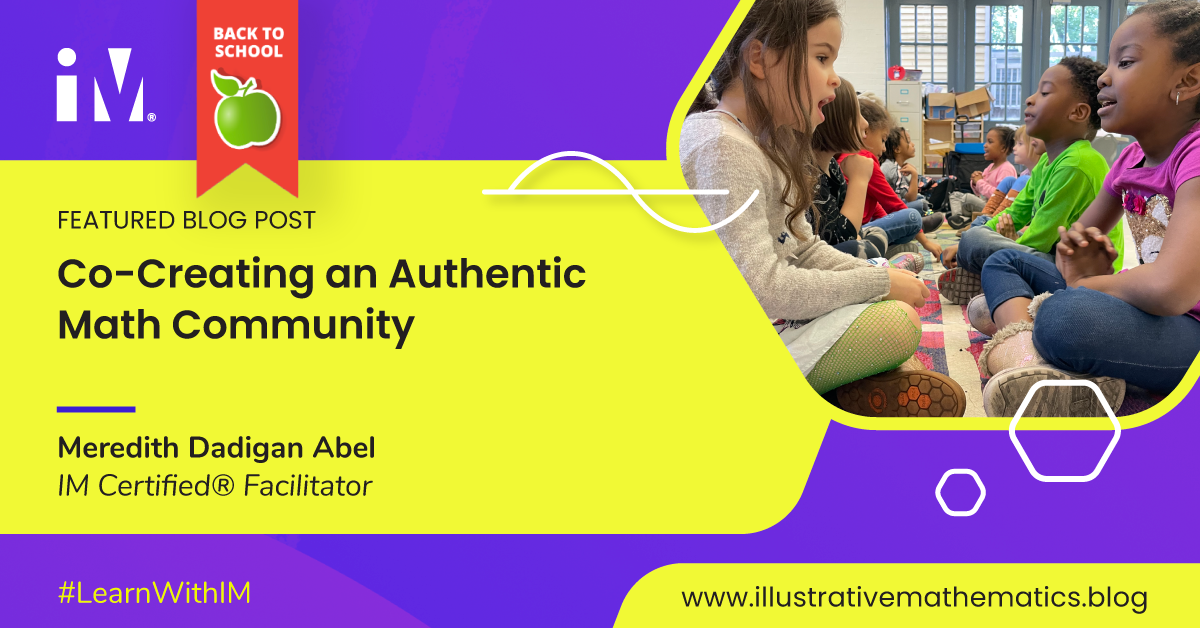By Meredith Dadigan Abel, IM Certified® Facilitator
It is magical to be in a classroom with a strong math community. In this classroom, the brilliance of all students prevails. Students and teachers share a unanimous belief that they’re all knowers and doers of math. While the experience is magical, this environment isn’t created with abracadabra and a snap of the fingers. This classroom structure is the result of thoughtful planning, intentional time and teamwork, and a goal-oriented mindset.
At the Beginning: Co-Crafting Norms
The IM curriculum writers intentionally embedded opportunities to build a math community into lessons in the first unit for each K–5 grade level. These opportunities invite teachers to be purposeful about creating a math community by co-crafting math community norms with students. Ultimately, a strong, authentic math community is the result of much more than co-crafting norms during the first six lessons at the beginning of the first unit. We get to work on building community throughout the school year.
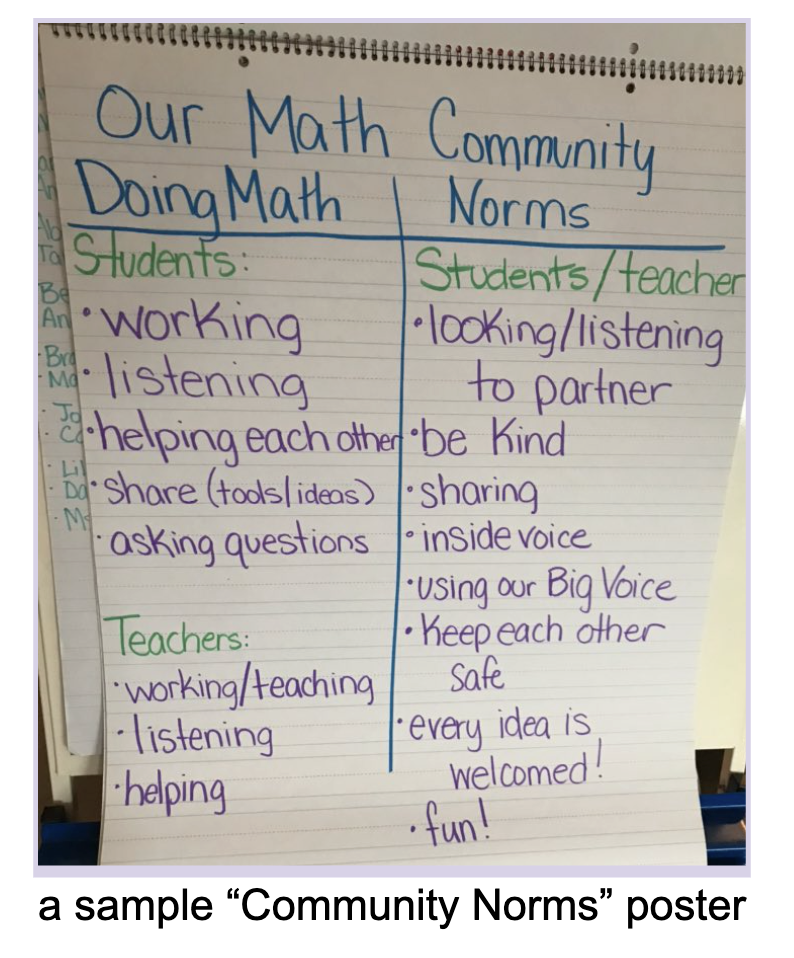
What does the work of building a community focused on discourse and collaboration look like?
After brainstorming math community norms with my students, we reviewed our “math community poster” for patterns. Students wanted a classroom community where students
- listen to one another
- have a growth mindset, and believe that they can learn
- support one another
- disagree respectfully with one another
Accordingly, we settled on four tenets to be the foundation of our community: uptake, encouragement, growth mindset, and feedback. Naming these was just the beginning. What do these look like when we’re practicing them?
Co-creating a Rubric
We started with the tenet of uptake: how we respond to our partners during conversations. Students helped to create a rubric that they would use during math. They came up with ideas about what authentic listening looked like and sounded like. Students truly owned this tool because they came up with every part of it, including what pictures they wanted on it.

Once the rubric was created, students used it to create goals related to their collaborative work together. We also carved out time for students to self-monitor their progress.
Intentionally Developing Structures for Working Together in Teams
Next it was time to explicitly teach these behaviors while promoting ownership. We did a variety of activities specifically focused on listening:
- Fishbowl: Students observed teachers talking about a math problem, through the lens of listening. Students wrote down what the teachers did well and what they could improve upon, and shared out. We repeated the process with a student group.
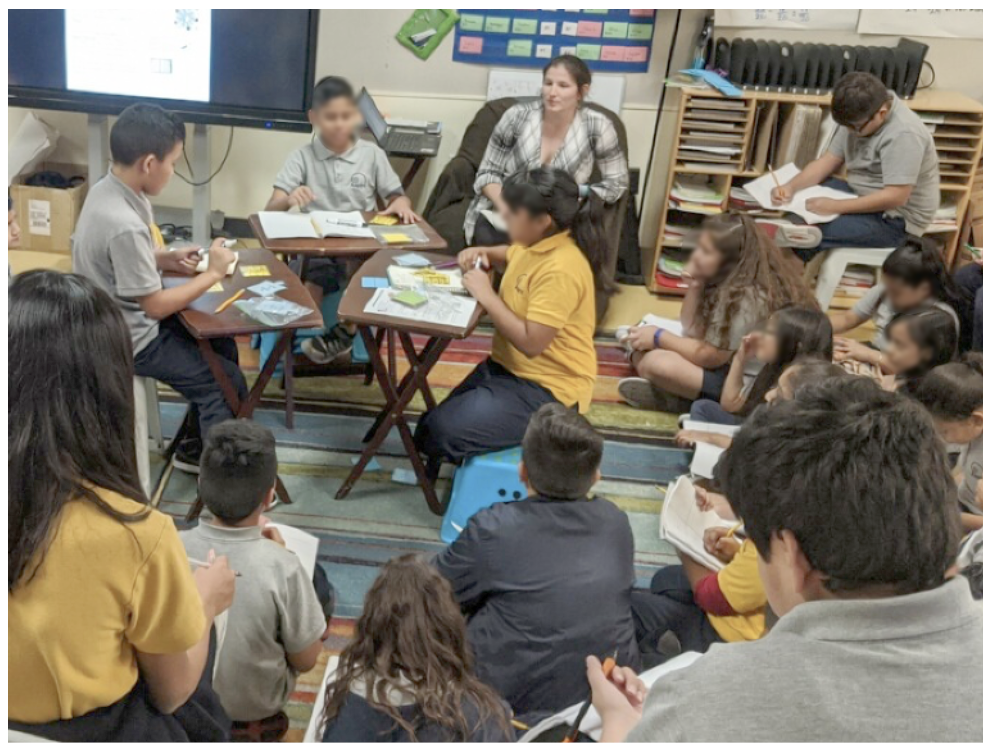
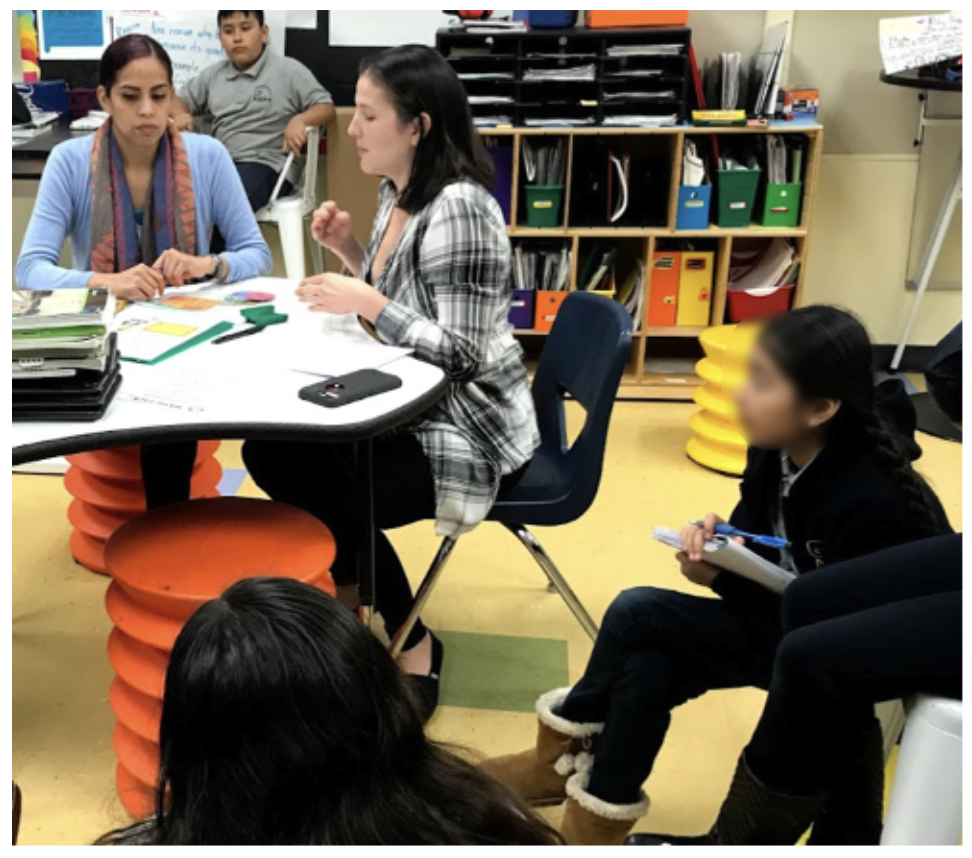
- Practicing and Reflecting on Listening: After working in groups, there was time for students to recognize and share how their partner listened to them. The teacher also recognized groups that showed authentic listening.
- Video or Audio Recordings: The teacher recorded video or audio of a group and played it back for the whole class or an individual group to reflect on.
- Math Community Goal Index Card: Students created a math community goal for the week and monitored their progress with stickers. At the end of the week, if students felt like they met the goal, they started working on something different or chose to continue the current goal.
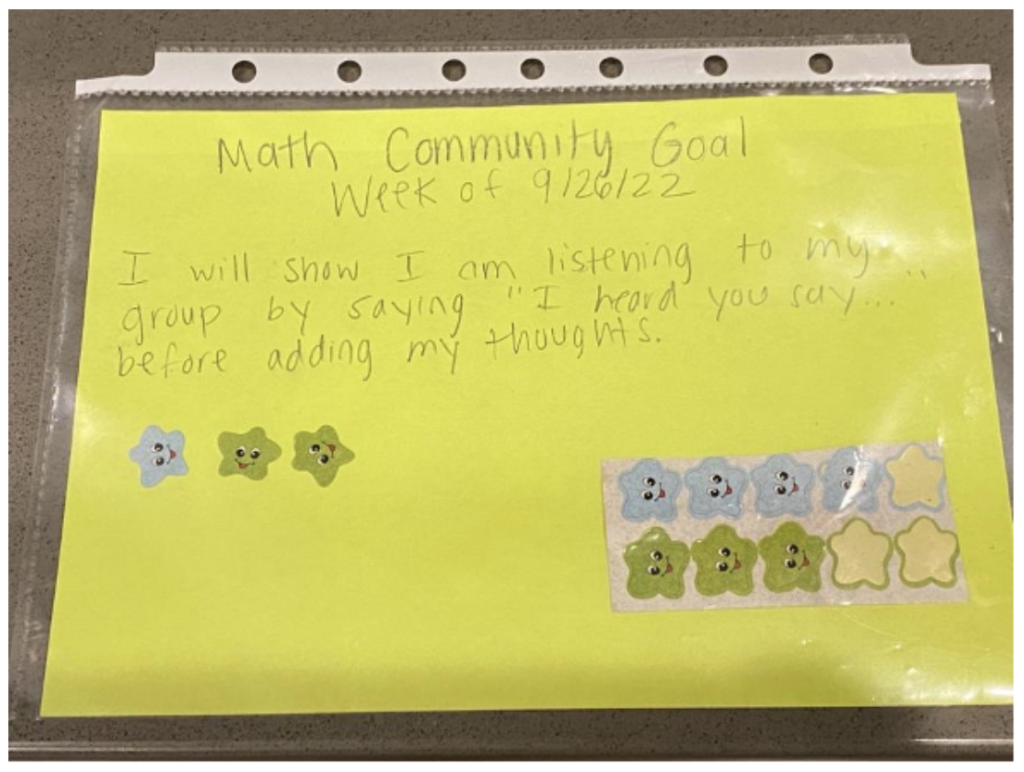
- Math Community Group of the Week: The teacher nominated a group who showed behaviors associated with the math community tenet they were working on. The group got to keep a trophy with them when they worked.

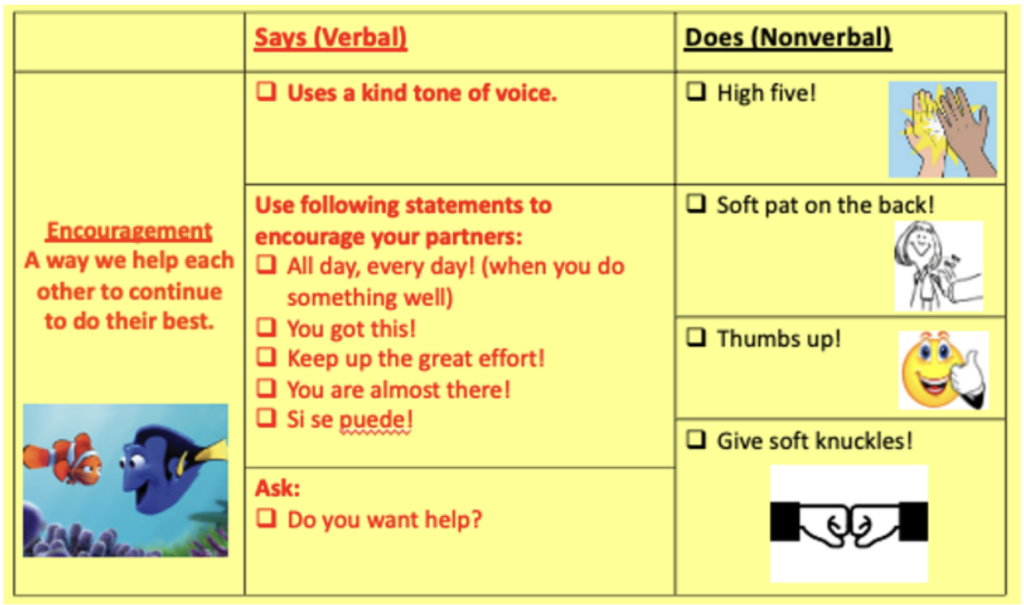
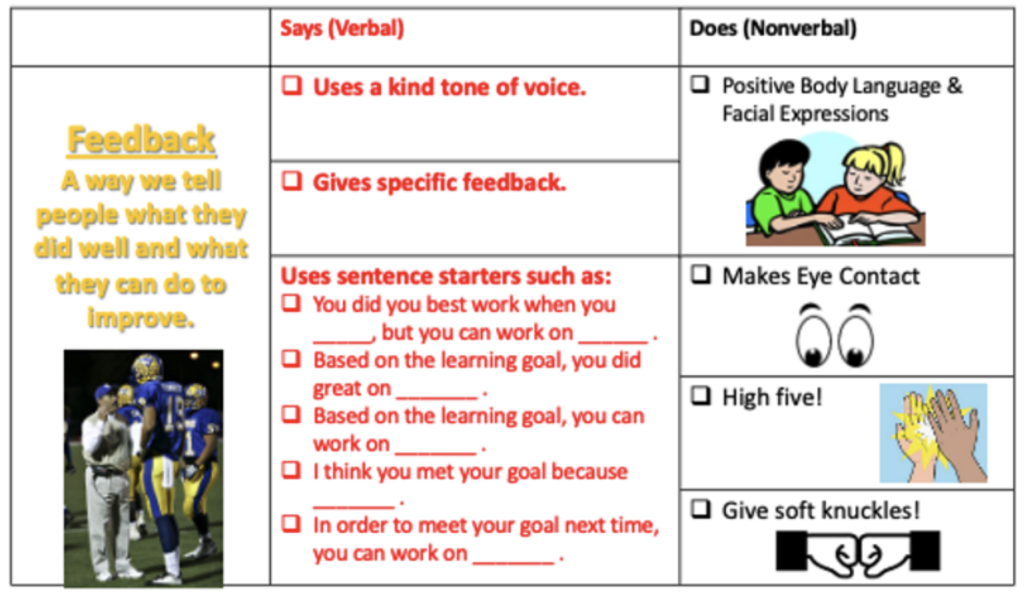
Goal-oriented Mindset
After we created rubrics for all tenets, groups chose which rubric they wanted to use each day.
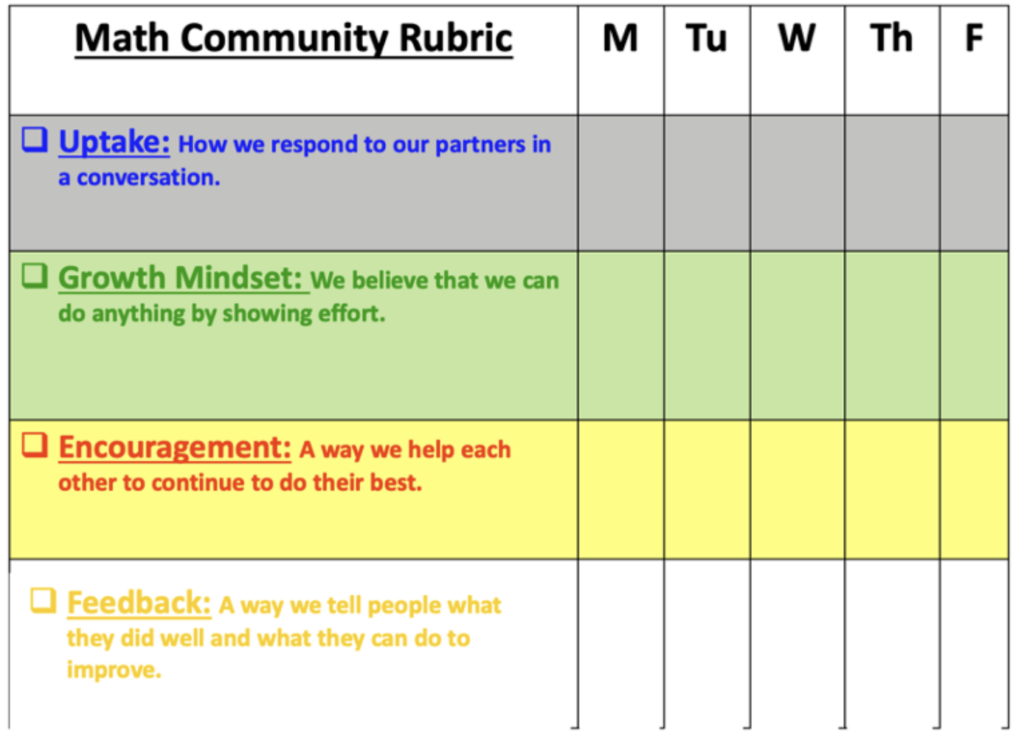
As we continued to build our math community, students were able to add or modify the content of each rubric to make it work for their group. For example, students came up with their own sentence stems to agree with what their partner said or to add on to what their partner said. Students saw the rubrics as living documents to adapt to their development and needs as the year progressed.
By the end of the year, the difference was clear. Students had worked hard to build their own classroom math community. They were persevering through hard math problems with discourse and encouragement. Students were able to give each other honest yet helpful feedback to support each other. By the end of the year, most students didn’t need to use the rubrics to self-assess, because they had internalized the four tenets we had worked on all year. Our math community had become strong, authentic, and empowered. This level of student independence and success freed me up to fully engage in facilitating conversations and asking questions to learn more about student thinking.
Zaretta Hammond wrote, “The classroom has to be designed around talk and task structures that allow students to define the people they see themselves becoming. Simply calling students ‘scholars’ or telling them they are smart is not enough to shape their internal identity. When students have a chance to narrate their lives, put language to their experience, and process their thinking through discourse they begin to notice and name their own competence.”
As teachers in an IM classroom, we are busy listening to student thinking and asking questions to learn more about their thinking. I invite us to pause once a week for a few seconds and think of this quote. Let’s look around, and listen to all of our knowers and doers of math. Revel in the brilliance that surrounds us. Admire how our students have created a community that enables everyone to have a true identity as a mathematician.
Conclusion
It is never too late in the school year to work on your classroom’s math community. Start evaluating your community with an asset-based approach. What strengths does your community already have? What tenet do you think your community would benefit from exploring? What methods can you use to explicitly teach this in a way that promotes student ownership? Instructional leaders, when can you intentionally spend time thinking about a math community with your teachers? How can you use co-teaching as a coach to support teachers in creating a math community?
